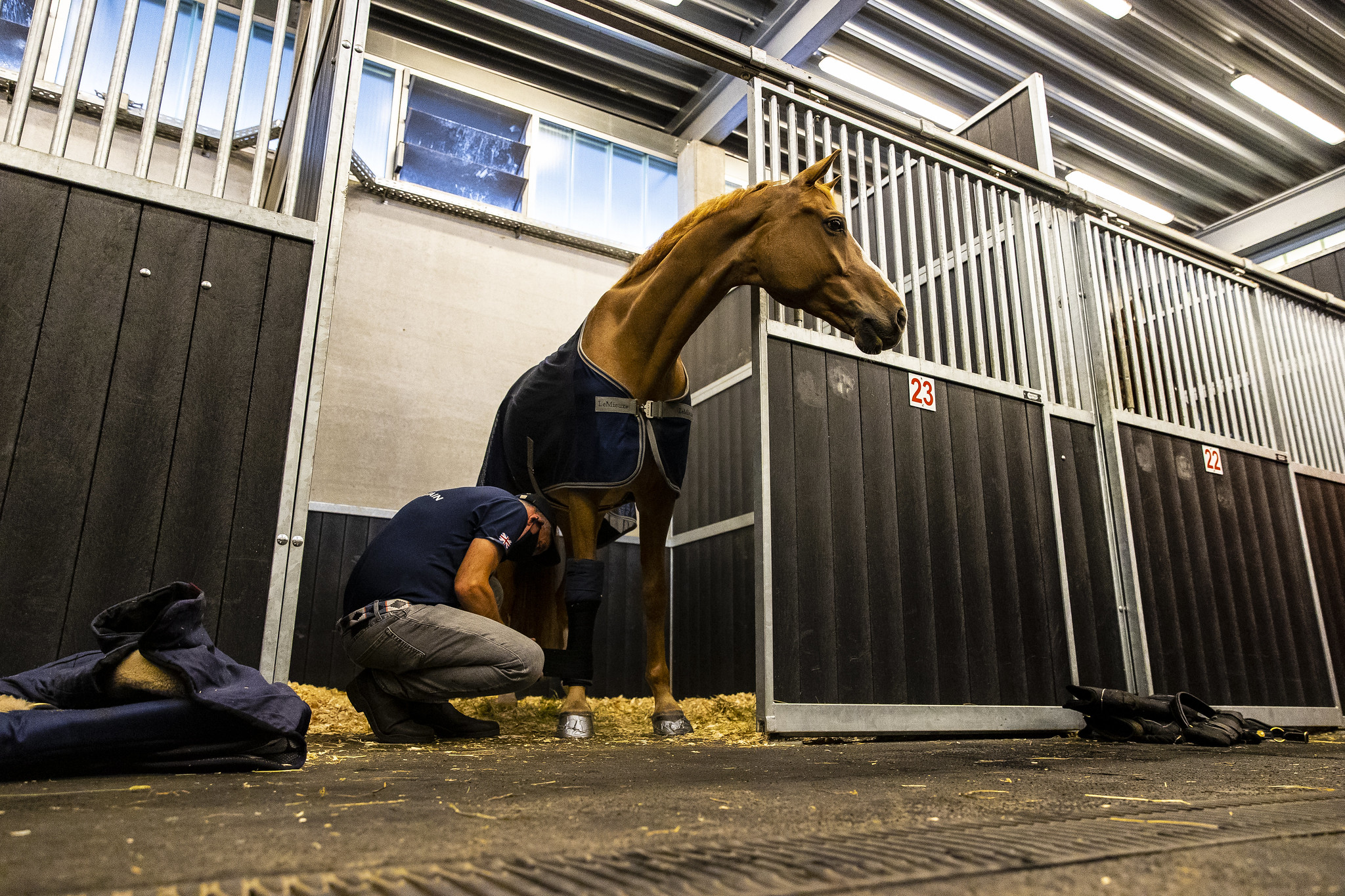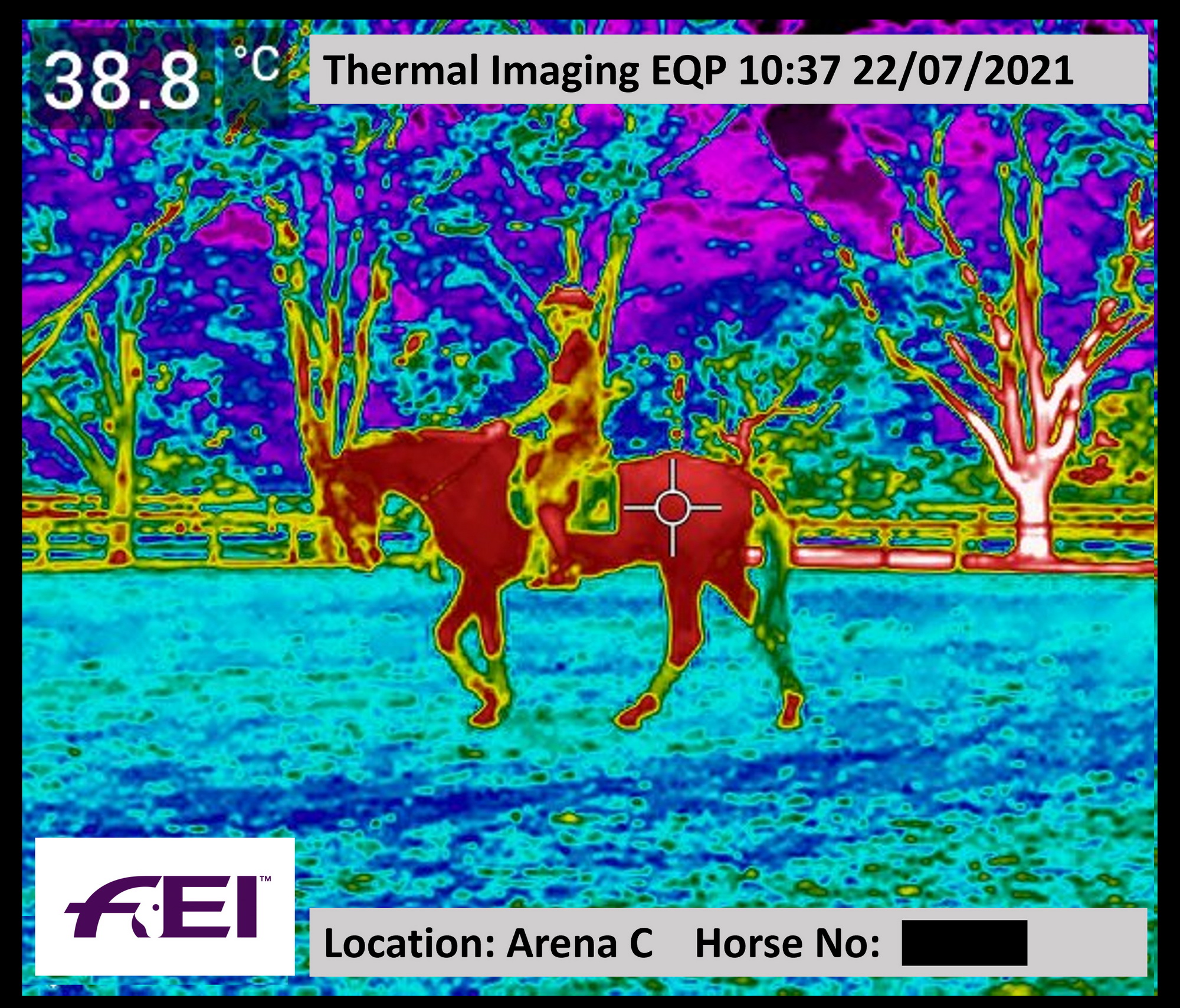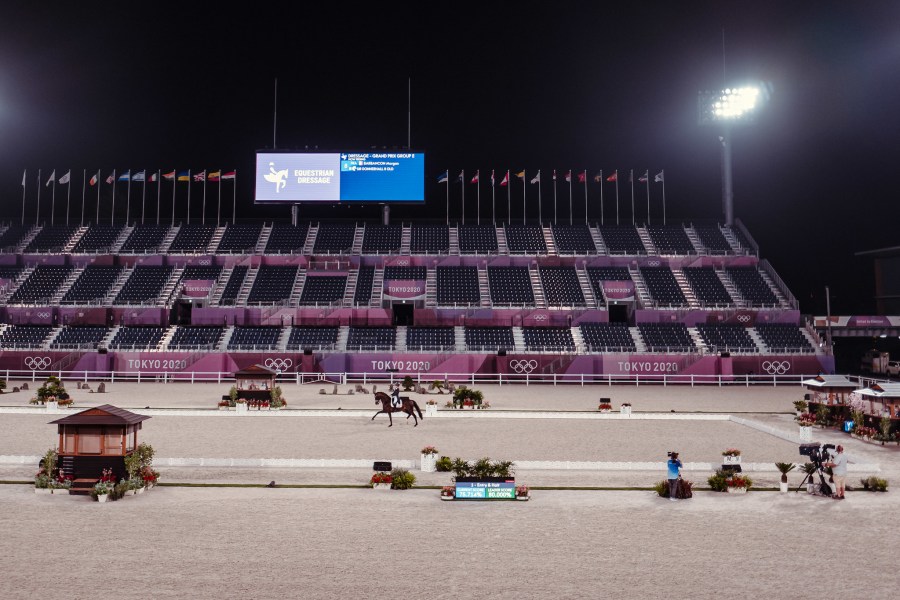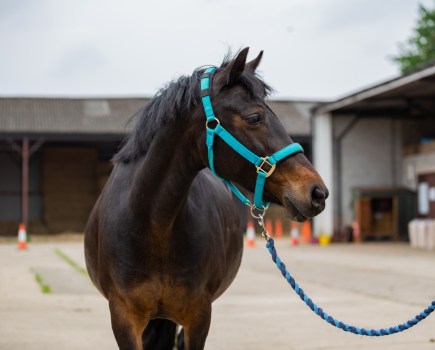Misting tents, mobile cooling units and air conditioned stables are among the “comprehensive” heat and humidity protocols that have been put in place to help horses and riders “optimise their performance” which competing in the equestrian Olympic events in Tokyo.
A statement from the FEI said it has been working on “minimising the impact of heat and humidity on performance” since the build up to the 1996 Olympic Games in Atlanta and its work for Tokyo 2020 is a continuation of that.
In Tokyo, the summers — typically the months of June to August — are short, warm, muggy, wet and mostly cloudy. Humidity is high with temperatures around the 35°C mark.
Measures in place include:
- Air-conditioned stables at both Baji Koen, where the Equestrian Park is located, and Sea Forest Park, the cross-country venue.

All stables are air conditioned. Pictured are British groom Alan Davies and Charlotte Dujardin’s ride, Gio. Credit: FEI
- Training and competitions scheduled to take place in early morning and in the evening under floodlights (pictured top ) when the temperatures are cooler.
- Constant monitoring of current and forecast climatic conditions, working with the official Tokyo 2020 weather provider, Japan Meteorological Agency
- Constant monitoring of onsite climatic conditions every 15 minutes during the cross-country phase on Sunday. This will be done using the Wet Bulb Globe Temperature (WBGT) index, which measures heat stress in direct sunlight, taking into account temperature, humidity, wind speed, sun angle and cloud cover (solar radiation).
- Close monitoring of horses by a world-class veterinary team as well as the use of multiple cooling facilities: shade tents, cold misting fans, unlimited ice and water, and mobile cooling units.
- Specific climate mitigation protocols for training and warm-up and also in-competition.

Thermal image from a thermal imaging camera. Credit: FEI
Officials are also monitoring horses in work using thermal imaging cameras, which enables a horse’s body temperature to be estimated accurately from a distance of 5-10 metres without needing to be in direct contact with them.
The statement added that this helps with early identification of horses at potential risk of overheating and allows for timely interventions, such as rapid cooling during training and warm-up and prior to competing.
It also means they have the information needed to stop a horse on the cross-country course if it is deemed necessary and can bring mobile cooling units out to provide rapid cooling. The mobile cooling units are also available for the arena-based competitions and in the warm-up arenas.
‘Like the Ritz’
“We can compare the stables in Tokyo with the Ritz in Paris,” said Patrick Borg, Olympics stable manager at Equestrian Park, the Baji Koen venue which is owned by the Japan Racing Association. “It’s five-star stabling for the horses. We try to do the very best for them.”
There are 333 stables at Equestrian Park, all air conditioned and with ribber matting. Washing and drying machines, as well as an unlimited supply of ice and water, is also available.
For the riders, shaded areas and special cooling tents/areas, including cold misting fans, have been provided. These can also be used by grooms and other team staff. Similar facilities have been made available for officials and volunteers too.
“We have ongoing and direct contact with the Weather Information Centre, which is constantly monitoring the weather specifically for the two equestrian venues, providing us with detailed information that allows the onsite team to make informed decisions on whether there may be a need to delay or interrupt a competition,” said FEI Veterinary Director Göran Akerström.
“If there is bad weather forecast then we receive hourly updates, and this can be more frequent if necessary.”
On site conditions are monitored by the FEI Climate Advisor David Marlin, in liaison with the FEI Veterinary Director, FEI Veterinary Commission, FEI Chief Steward and Tokyo 2020 Sport team.
To assist National Federations with optimal preparation for the Games, the FEI produced a series of educational Beat the Heat videos which are aimed at optimising both human and equine performance in hot and humid conditions.
Practical advice has been made available through the FEI Athlete hub, as well as on the dedicated Tokyo Olympic and Paralympic hub.
All photos supplied by FEI









